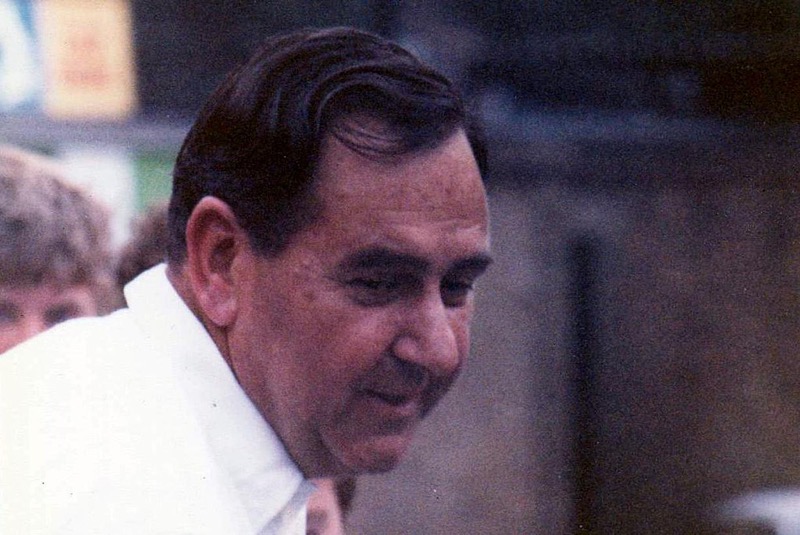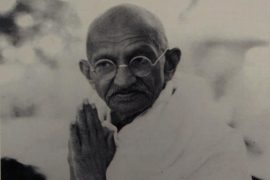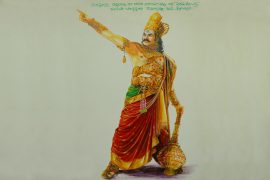December 1974. The mood in the English cricket camp is anything but upbeat. It is as cold as the far-from-hospitable ‘bleak’ weather back home. Cricketing forays Down Under are, no less, under the cloud for a side that had, until then, been the epitome of professionalism — an English archetype.
Mike Denness’ touring squad is in a shambles and totally disrupted. With injuries being the order of the day, every player is nursing some part of his body in plaster. Denness makes a frantic call to a veteran of many cricketing battles. The caller gives the seasoned campaigner no room to think of his disappointment at not being originally selected after a productive season. The response, however, is in the affirmative — true to the never-say-no-to-challenge premise, the hallmark of British pride.
Five days later, Colin Cowdrey is playing in Perth, in a Test match, on the fastest wicket in Australia, against a new-found, awesome pace combination that has dealt stifling blows to one of John Edrich’s hands and one of Denis Amiss’ thumbs. Cowdrey, sent in, one-down, makes a polished 22.
Master Class
In the second essay, Cowdrey is asked to open after the luckless Brian Luckhurst breaks a band. His riposte: a well-compiled 41. It was a revelation — an amazing display of defensive batting. Of easy aplomb and elegance. As Amiss observed, “It gave us so much (of) confidence to see how fast bowling could be played. Colin would drop his wrists to anything short of a length and take his bat down and across his body, away from the ball. The casual sway of the head, while the rest of us were all arms and undignified scuttling — a wonderful technical effort.” This was appropriate synopses — no more, no less.
Cowdrey would have scored more runs — if only the bowling was hostile,. But, it was an all-out ‘attack’ which did not favour Cowdrey’s front-foot driving. For once, Colin, much against his liking, had no choice but to cling to his fantastic technique… for mere survival. Yet, his graceful classicism was a tribute to cricket’s time-honoured methods: of his immense faith in the basics, which knows no age. He was 42, all right — and, pitted against the likes of Dennis Lillee and Jeff Thomson. Yet, it was no small achievement. It showed his class, the make-up of a fighter. Cowdrey was a true competitor.
Forget about his charming, baby-faced exterior. Cowdrey was strong inside — so long as the subject was cricket.
Come June 1975, Cowdrey paid back some of the dues. He led Kent’s race for a four-wicket victory, with a masterly 151 not out. It was an anti-climax for the Aussie captain, Ian Chappell, who had ordered the coach driver to take the team off to Southampton, at 16:00 hrs. The weary visiting side could, instead, arrive only at midnight, thanks to Cowdrey’s surgically orchestrated ‘thrashing’ of the Aussie fast men.
Said Luckhurst, the Kent captain, on Cowdrey’s farewell innings, “He (Colin) was absolutely in control as he tore Lillee apart. It was a delight to beat them by a vintage Cowdrey innings. At the age of 43, he was hooking Lillee in front of square.” It also spoke volumes of Cowdrey’s sense of commitment. No matter who was his captain, Cowdrey, a former English skipper, served his county, and England, with diligence and fidelity.
Cowdrey came from a cricketing family. His father played for Surrey and Minor Counties, with purpose, without being extraordinary. But, he was destined to contribute much to the game through his only son — who he christened Michael Colin Cowdrey — one who eventually lived up to his famous initials, MCC.
Great Skillset
When Colin was born on Christmas Eve, in 1932, in Bangalore (now Bengaluru), his father had established a 2,000-acre tea estate in South India. When Colin was only six, Cowdrey Senior dragged his son to observe a ship passing three miles away, with Sir Don Bradman on board. The ‘word’ Bradman lit up the little lad’s imagination. Cricket was soon to be his life, a romantic pursuit. Predictably, Colin, at age seven, posted his first ton, in an Under-11 match. It was a comedy of errors too. The scorer, whose mathematical skills were far below average, or worse, had goofed up with Colin’s scoring pattern. There was some confusion; but, ultimately, all was hunky-dory. Cowdrey was awarded his first-ever three-figure score.
Cowdrey was in the Kent side, seven years later. And, at 21, he was an English Test player in his own right. The classy English all-rounder, Trevor Bailey, who had seen Colin, at age 18, score a skilful 154 out of 270, and 34 out of 63, against Surrey, whose attack had an aura of mysticism around it, with the likes of Jim Laker and Tony Lock, was delighted. So was Laker, who was certain, that, “He (Cowdrey) was an England batsman for the next 20 years.”
Cowdrey’s greatest moment arrived when he hit a classic century in front of a huge Melbourne crowd in 1954-55. He walked into the thick of the battle, when England’s innings was in a mess — 4 for 44, with Miller and Lindwall having done the damage. As Cowdrey began to perform a major repair job, with superb technique and sound temperament, England began to achieve some respectability: 191, with Cowdrey’s contribution being a peerless 102.
Wrote The Observer, UK, “His (Cowdrey’s) century had the bloom of youth in it, but the soil from which it sprang had been tended lovingly and long. A blend of leisurely driving and secure back-play, of power and prosperity.”
Touch & Glow
Cowdrey’s batting had in it a fair amount of the Freudian element too. His cricket was totally based on touch. So, whenever he would not feel ‘in touch,’ Cowdrey would often be excessively passive — in the abyss of a technical conundrum. No matter the runs he would have had in his bag, he’d make most bowlers look devastating. Worse still, he would allow them to bowl maiden after maiden. India’s ‘Maiden Bowling Star’ Bapu Nadkarni was one such ‘recipient’ of a Cowdrey innings, or two, gone out of sync.
All the same, Cowdrey’s ken for the game was always optimistic, refreshingly different, and free of prejudice: qualities that made him an administrator with a clear mind. For a batsman who was an effortless timer of the ball, in his playing days, Cowdrey was a cricketing diplomat with a knack for caressing the nitty-gritty of world cricket and lending solutions to major problems. He had a distinctive stint as Chairman of the ICC.
The return of South Africa into international cricket was one big feather in his cap. Cowdrey also lived a great dream. To include cricket in the Commonwealth Games — and, the Olympics. Cricket in Commonwealth Games was a reality, and if the Olympics too follows suit in the future, it will be worth a tug, or two, on this gentle giant’s everlasting contribution. Of a sophisticated batsman who scored over 42,719 runs in first-class cricket — 692 matches; 1,130 innings, with 107 centuries (highest score: 307; average: 42.89); 231 fifties; and, 7,624 runs, and 22 tons (highest score: 182), and 38 fifties, in 114 Tests (average: 44.06). Catches: FC: 638. Tests: 120.
Charming, chubby, and good-humoured, Cowdrey, the inventor of the ‘paddle’ sweep-shot, and a great slip-fielder, has been what his facial corollary, Oliver Hardy, was to comedy. Of, perhaps, a different, also ardent visage, sweetened with a sense of refined grace and eternal bonhomie.
-30-
Copyright©Madras Courier, All Rights Reserved. You may share using our article tools. Please don't cut articles from madrascourier.com and redistribute by email, post to the web, mobile phone or social media.Please send in your feed back and comments to [email protected]











